Does Hydrofluoric Acid Burn Through Stuff Like in Breaking Bad?
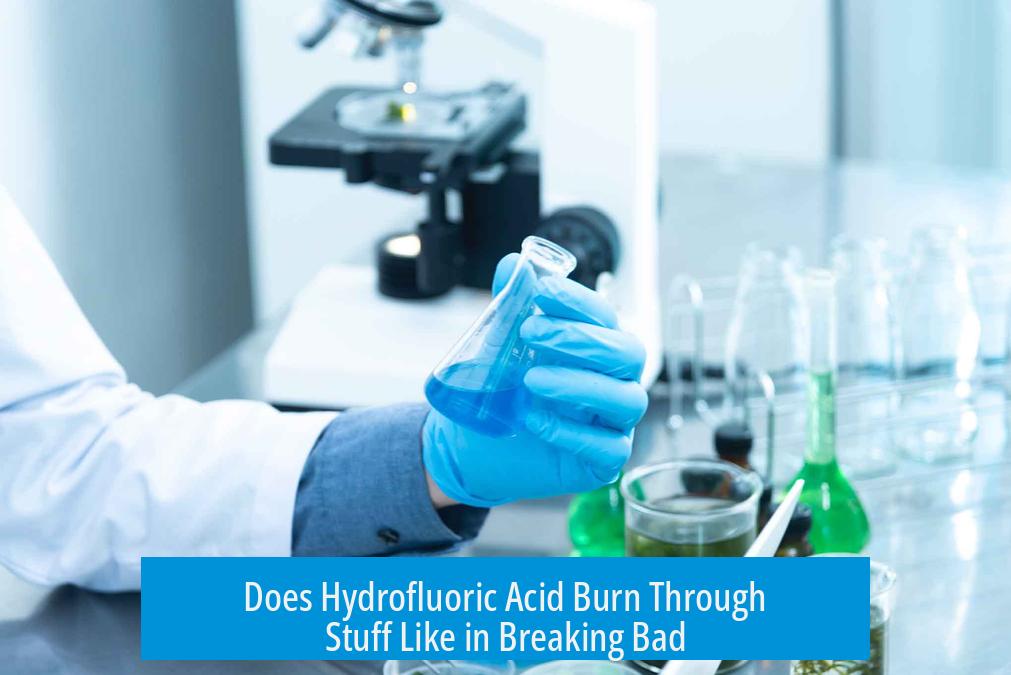
Hydrofluoric acid (HF) can corrode certain materials such as glass and ceramics effectively and will attack some metals, but it does not rapidly dissolve human tissue or flesh as depicted in Breaking Bad. HF’s corrosive action on organic matter is slow and limited, mostly affecting mineral components like bones and teeth rather than soft tissue. The show captures some accurate chemical properties of HF, such as its inability to dissolve plastics and its way of etching ceramic, but it exaggerates the speed and extent of its action on flesh.
Hydrofluoric Acid: Corrosiveness and Toxicity
Effect on Human Skin and Toxicity
Hydrofluoric acid presents unique hazards due to its toxicity and corrosiveness. Concentrated HF causes acid burns on the skin by reacting chemically. The danger increases with weaker HF because it penetrates deeper and disrupts calcium pathways, which can be fatal. For an average adult male, exposure of about 7 square inches of skin to HF may result in death. Inhalation of even small quantities of HF gas is extremely hazardous.
Corrosion on Metals, Glass, and Ceramics
- HF mildly corrodes some metals. However, metals like copper and aluminum form insoluble fluoride layers on contact, protecting them from further damage.
- The acid aggressively etches glass and ceramic materials. It is notable for its ability to dissolve silicon-containing compounds, which most acids cannot attack efficiently.
- HF’s corrosiveness to ceramics is strong enough to eat through materials such as bathroom tubs over time.
Its real strength is dissolving inorganic materials such as glass and bone, while its action on many metals is limited by protective fluoride coatings forming quickly upon exposure.
Hydrofluoric Acid and Organic Materials: Flesh, Tissue, and Bones
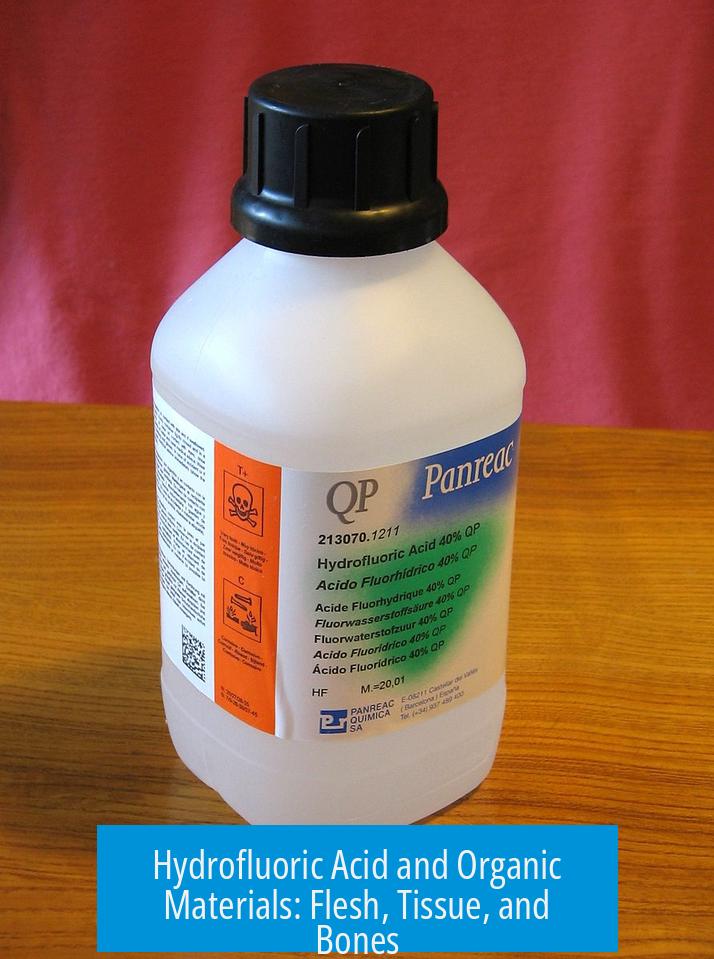
Misconceptions from Breaking Bad
The portrayal in Breaking Bad exaggerates HF’s action on flesh. Concentrated HF or even strong hydrochloric acid do not quickly dissolve organic tissues. Instead, HF’s chemical reaction with soft tissue is slow and limited. It causes chemical burns but does not consume flesh rapidly or voraciously.
Experimental Observations
Experimental trials dissolving tissue in HF show that organic matter becomes mushy but does not fully dissolve. For example, a dead mouse placed in HF softened, but remained largely intact. This outcome contrasts sharply with the rapid flesh dissolution depicted in the television show.
Why Bones and Teeth Dissolve Better
HF targets mineral components like calcium phosphate found in bones and teeth. It can dissolve these materials effectively, unlike soft organic tissue which contains different chemical structures less prone to HF attack. HF’s fluoride ion disrupts mineral lattices in bones, leading to their breakdown.
Stronger Alternatives for Organic Tissue Dissolution

Other chemicals perform better at breaking down organic matter:
- Sodium hydroxide (NaOH) or potassium hydroxide hydrolyze proteins and fats rapidly, breaking them down into soluble components including salts of fatty acids and amino acids.
- Sulfuric acid (H2SO4) and hydrochloric acid (HCl), strong acids, dissolve flesh better than HF but still require time.
- Piranha solution (a mix of concentrated sulfuric acid and hydrogen peroxide) is effective for organic removal without damaging glass.
If fast organic tissue dissolution is required, strong bases like lye or concentrated mineral acids outperform HF by a significant margin.
Supporting Demonstrations
Several experimental videos, including those from Mythbusters, tested acids on animal tissue. Mythbusters’ tests used mixtures like piranha solution to dissolve a pig carcass with moderate speed, proving HF alone is insufficient for such rapid digestion of organic matter.
HF and Plastic: What Does Breaking Bad Get Right?
Hydrofluoric acid does not dissolve plastics. Despite being organic in composition, many plastic polymers resist HF’s chemical attack. This property aligns with Breaking Bad’s depiction of HF being unable to burn through plastic containers holding the acid or tissue samples.
This resistance means HF can be safely stored and handled in certain plastic vessels, which is a critical consideration in laboratory practice.
Chemistry Behind Hydrofluoric Acid’s Behavior
Weak Acid Nature and Reaction Rate
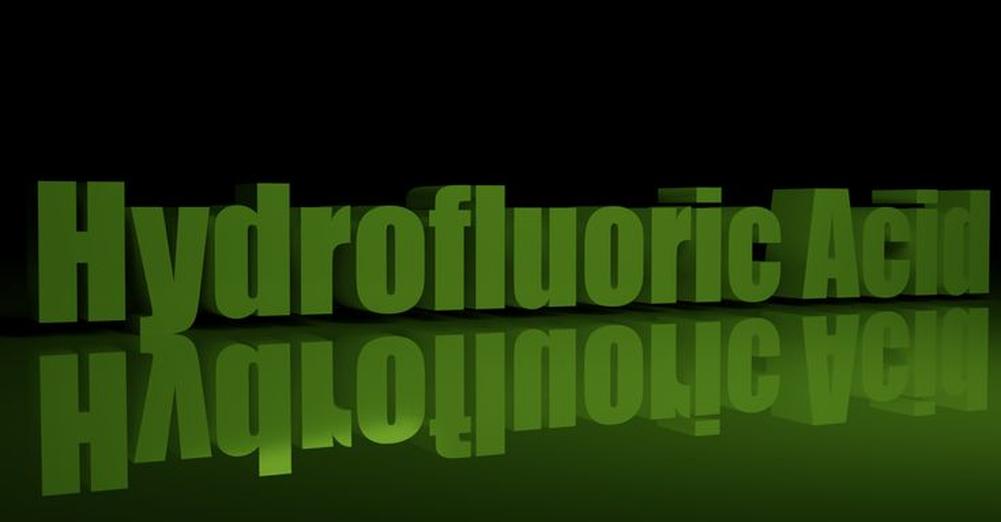
HF is a weak acid; it does not fully dissociate when dissolved, limiting the concentration of free ions available. This feature restricts the speed at which it reacts compared to strong acids such as hydrochloric or sulfuric acid.
Due to limited ion availability, HF reacts more slowly with organic tissues. The “burn through” portrayal tends to exaggerate its reactivity with flesh.
The Role of the Fluoride Ion
The fluoride ion (F−) contributes to HF’s damage by penetrating organic and inorganic material. In tissues, it disrupts calcium-based pathways, leading to toxicity and cell death. In materials like glass or ceramic, fluoride ions instigate dissolution by breaking silicon-oxygen bonds.
Thus, the destructive power of HF does not come purely from acidity but from fluoride ion interaction with minerals and organic calcium compounds.
Summary: What Does HF Really Do?
| Material | HF Action | Notes |
|---|---|---|
| Glass & Ceramics | Strong corrosion, dissolves | Can etch bathroom tubs; unique acid for these materials |
| Metals | Mild corrosion on some | Copper and aluminum form protective layers stopping attack |
| Plastic | No effect | HF-resistant, safe for storage |
| Organic Flesh & Tissue | Limited, slow effect | Soft tissue resists; flesh not rapidly dissolved |
| Bones & Teeth | Effective dissolution | Targets calcium phosphate mineral parts |
Key Takeaways
- Hydrofluoric acid dissolves glass, ceramics, and mineral components of bones but attacks soft tissue slowly.
- HF does not dissolve plastics, matching the accurate depiction in Breaking Bad.
- Breaking Bad overstates the rate and extent of flesh dissolution by HF; it cannot rapidly consume bodies.
- Strong acids like sulfuric acid or bases like sodium hydroxide dissolve flesh much more effectively.
- HF’s toxicity arises mainly from fluoride ions disrupting calcium pathways in humans.
Does Hydrofluoric Acid Burn Through Stuff Like in Breaking Bad? Let’s Get Real!
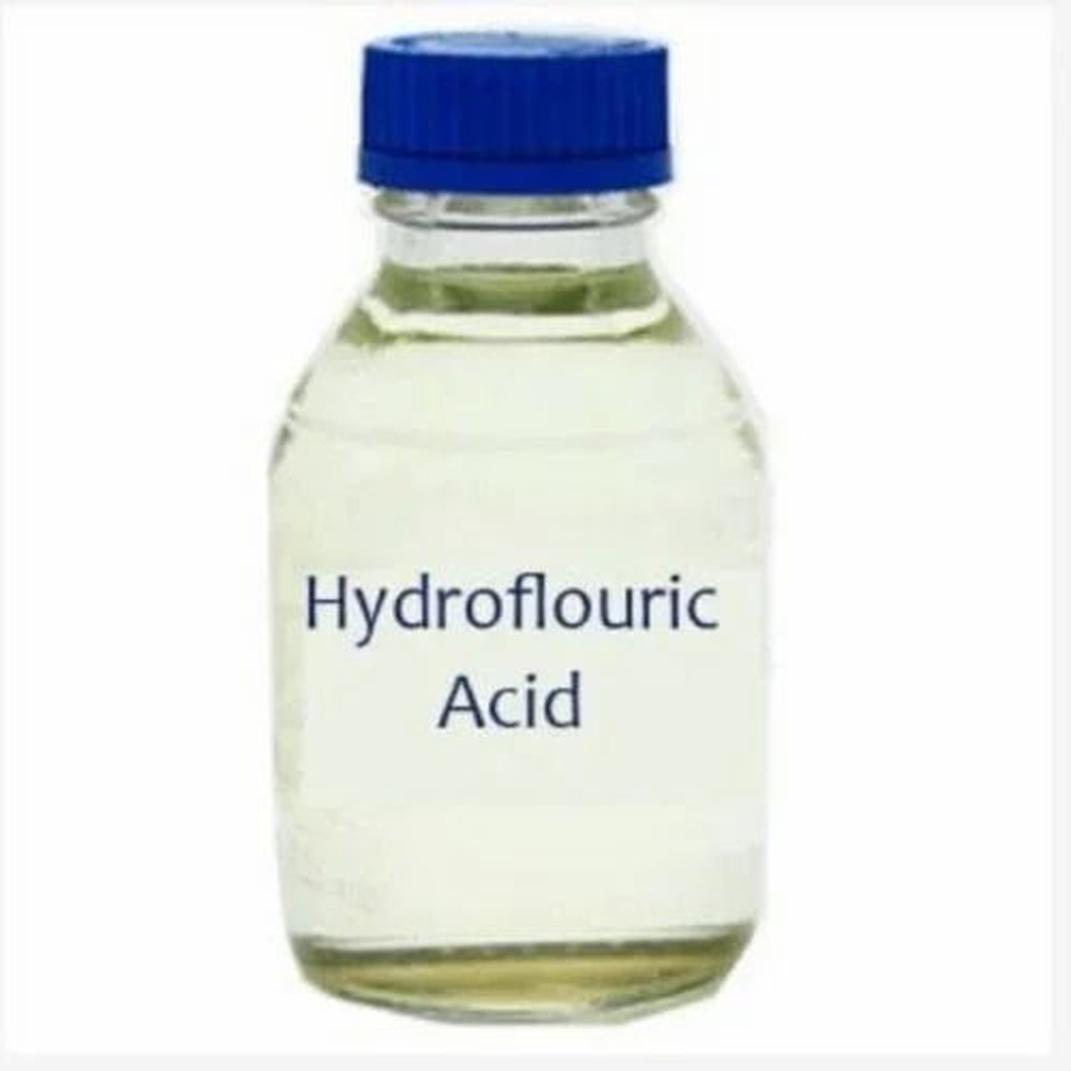
So, can hydrofluoric acid (HF) dissolve flesh and materials like in Breaking Bad? The answer is a nuanced yes and no. While HF can definitely “burn through” glass and some metals, its effect on organic tissue is nothing like that wild TV show drama. It’s dangerous, but not instantly explosive or magical.
Let’s unwrap what hydrofluoric acid really does, what Breaking Bad nailed, and where it went a bit too Hollywood.
Hydrofluoric Acid: The Acid with a Split Personality
HF stands out among acids, but not always for the reasons you’d think. Unlike stronger acids like sulfuric or hydrochloric acid that fully melt metals and flesh quickly, HF is actually a weak acid. This means it doesn’t fully dissociate in water, so it reacts more slowly. For the chemically curious, that slower reaction limits the “bite” it has on organic matter.
But be careful—HF is insanely toxic. You might expect the concentrated stuff to be deadlier since it burns on contact, and it surely can cause nasty acid burns. However, paradoxically, weaker HF solutions sneak deeper into your skin. They mess with your calcium pathways, which can kill you silently. So 7 square inches of exposed skin to HF? That’s potentially fatal in an average adult male, according to safety data sheets. Inhaling even a bit of vapor is dangerous too.
The Breaking Bad Accuracy Check: What Did They Get Right?
Fans of Breaking Bad might recall a bathtub scene where HF dissolves a body through plastic—a dramatic effect indeed. The show correctly portrayed some chemistry facts:
- HF does NOT attack plastic. This is spot on. Plastic is surprisingly resistant because HF’s fluoride ions don’t react with it.
- HF attacks ceramics and glass like crazy. Absolutely true. HF’s ability to dissolve glass is unique among common acids. Laboratories use it intentionally to dissolve glass for analysis of components trapped in the material.
- HF corrodes some metals but not all. Metals like copper and aluminum form protective fluoride layers that shield them from further damage. The aluminum oxide layer on aluminum metal is similar in effect, preventing rapid corrosion.
So Breaking Bad did its homework there. But what about flesh?
Flesh Under HF: It’s Not Dissolving into Thin Air
Despite the terrifying images on TV, HF doesn’t devour bodies rapidly. Experiments working with HF—even with concentrated solutions—show it doesn’t break down skin or tissue the way the show depicts. For instance, a lab once tried dissolving a dead mouse in HF. The acid turned the tissue into mush but didn’t completely dissolve it or make it vanish. The bones and teeth were affected more, as HF targets minerals in the body rather than the organic tissue directly.
This is because the acid’s fluoride ion mooches around assaulting calcium salts in bones and teeth, not proteins or fats in flesh. Breaking Bad exaggerated the flesh-eating speed for narrative effect.
What Actually Dissolves Flesh Fast?
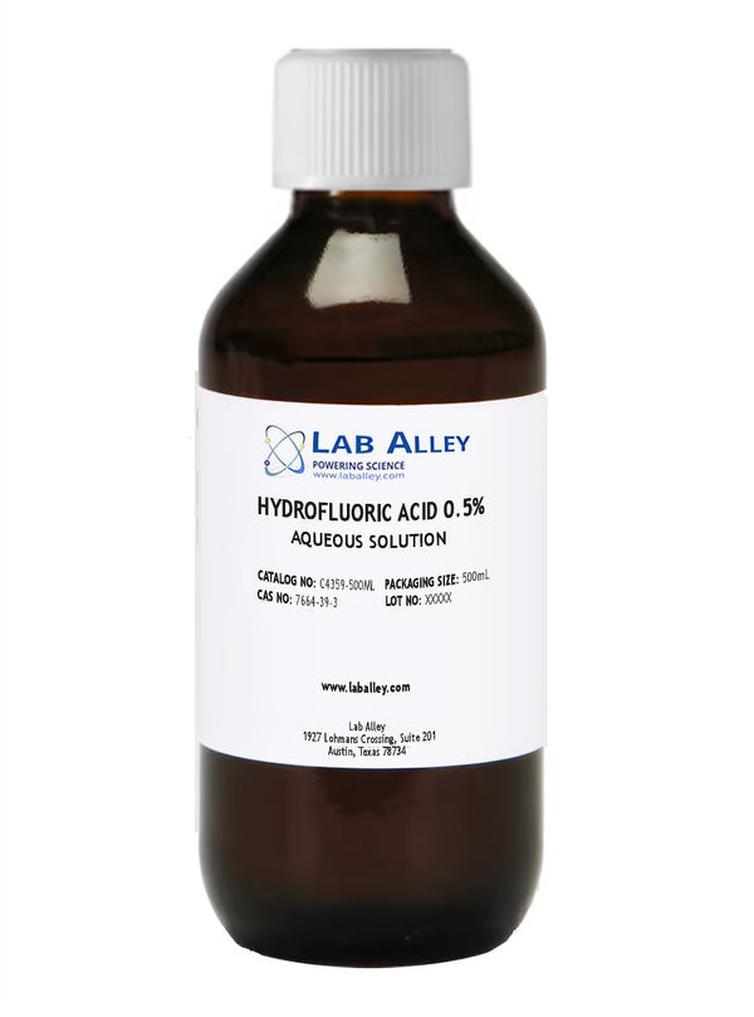
If you want real-life flesh dissolving on speed dial, look elsewhere:
- Strong acids: Sulfuric acid (H2SO4) and hydrochloric acid (HCl) attack organic tissues faster than HF but still take time.
- Strong bases: Sodium hydroxide (NaOH), aka lye or Drano, is a champion at dissolving flesh by hydrolyzing proteins and fats into simpler compounds quickly.
Mythbusters even did an episode testing ‘flesh-eating’ acids. Their mix of sulfuric acid and hydrogen peroxide (known as piranha solution) demolished organic matter much faster—plus, it didn’t eat through the glass container, confirming HF’s unique ability to dissolve ceramics but spare plastic.
Why Does HF Spare Plastic But Eat Glass?
Plastic polymers are mostly carbon and hydrogen chains, relatively inert to fluoride ions. Glass and ceramics, on the other hand, contain silicon-oxygen bonds that HF can break apart chemically. This uniqueness explains why plastic tubs survive exposure while glass ones dissolve dramatically.
So, in practical terms, an HF spill in a plastic container won’t eat right through it, but the same spill on a glass surface? Cue etched nightmare.
Hydrofluoric Acid and Safety: The Hidden Danger
Don’t let HF’s slow reaction fool you. It’s a hazard monster! Exposure can be fatal, not just by burns but by systemic toxicity. Fluoride ions penetrate the skin and disrupt vital calcium in the body—this can cause severe heart and nerve issues without obvious immediate pain.
Handling HF is strictly for trained professionals with proper protective gear and emergency plans in place. It’s not just corrosive; it’s deadly.
Summary: Breaking Bad’s Nuclear Chemistry Showdown—Fact or Fiction?
Hydrofluoric acid does burn through glass and ceramics like a hot knife through butter. It can corrode certain metals. It does not dissolve plastic. However, its ability to dissolve flesh is slow and limited, targeting mineralized tissue like bones more than the soft stuff. For rapid flesh disposal, other chemicals do a faster, messier job. Breaking Bad nailed some facts but got the flesh-dissolving drama a bit wrong.
So, Should You Believe Breaking Bad’s HF Scenes?
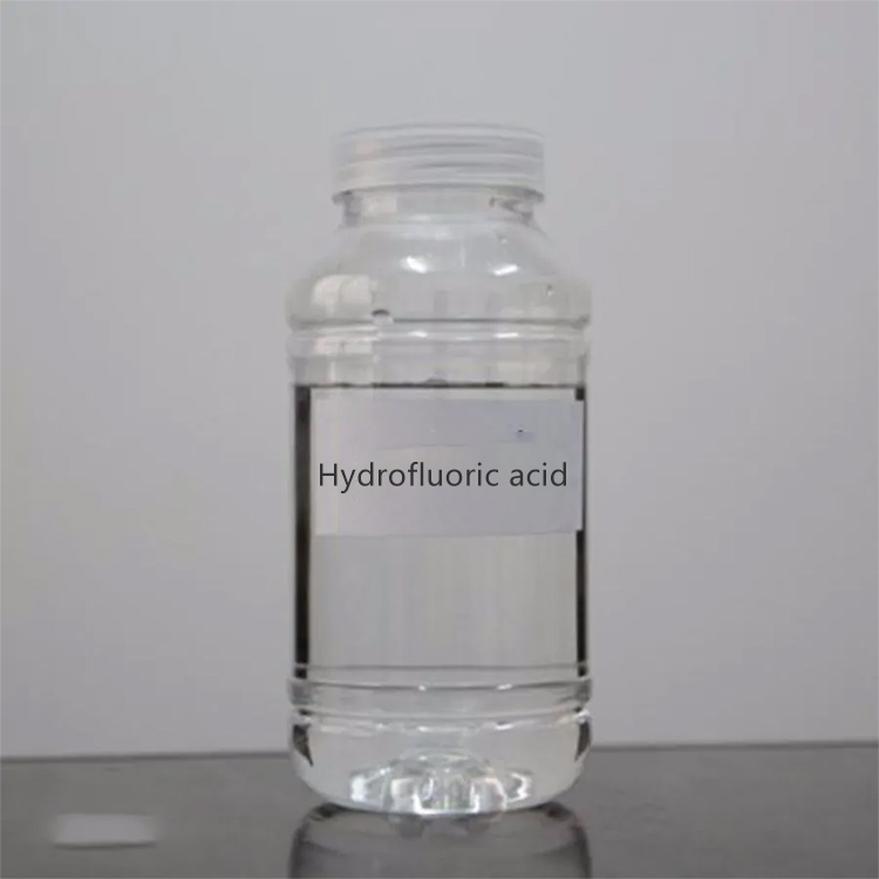
If you’re expecting to see a bathtub-melting, body-vanishing acid on your next chemistry adventure, temper your excitement. HF is fierce in its own realm—shattering glass and gnawing on bones. But that rapid flesh meltdown? Hollywood exaggeration at its finest.
Now, here’s a thought: if HF were really that dramatically corrosive to tissue, wouldn’t all those lab accidents be much more explosive? Instead, HF’s danger lies in silent, insidious poisoning and glass destruction. That’s oddly less cinematic but terribly real.
Final Practical Tips
- Never handle HF without professional training and protective gear. Its toxicity demands respect.
- If you want to remove glassware residues, HF can be a lab hero but treat it with utmost caution.
- Don’t expect HF to quickly clean off organic spills—the myth of the “flesh-dissolving acid” is just that: a myth.
- For practical organic digestion, use strong bases like sodium hydroxide, but even then, safety first!
So next time someone asks, “Does hydrofluoric acid burn through stuff like in Breaking Bad?” you can confidently say, yes, but mostly glass and bones, not quite the flesh-eating monster TV made it out to be.
And that’s the beautifully complex chemistry of hydrofluoric acid in a nutshell—deadly and precise, but not Hollywood magical.
Does hydrofluoric acid really dissolve a bathtub like in Breaking Bad?
Hydrofluoric acid can dissolve glass and ceramic materials, so it can corrode a bathtub made of those. However, it takes time and enough quantity. It’s not as instantly destructive as TV shows suggest.
Can hydrofluoric acid dissolve flesh and bones completely?
HF slowly dissolves bones and teeth due to their mineral content but is weak against soft tissue. It may turn flesh mushy but won’t fully dissolve it quickly like in Breaking Bad.
Why doesn’t hydrofluoric acid dissolve plastic if it’s organic?
HF does not attack plastics. This is accurate in Breaking Bad. Plastics resist HF because of their chemical structure, even though plastics are organic, HF doesn’t break them down.
Is hydrofluoric acid a strong acid that burns through everything fast?
HF is actually a weak acid chemically. It reacts slower than strong acids because it does not fully dissociate into ions. The fluoride ion causes damage, but the reaction speed on tissues is limited.
What chemicals work better than hydrofluoric acid to dissolve organic tissue?
Strong acids like sulfuric acid or bases like sodium hydroxide dissolve flesh more effectively. Sodium hydroxide is especially good at breaking down proteins and fats faster than HF.


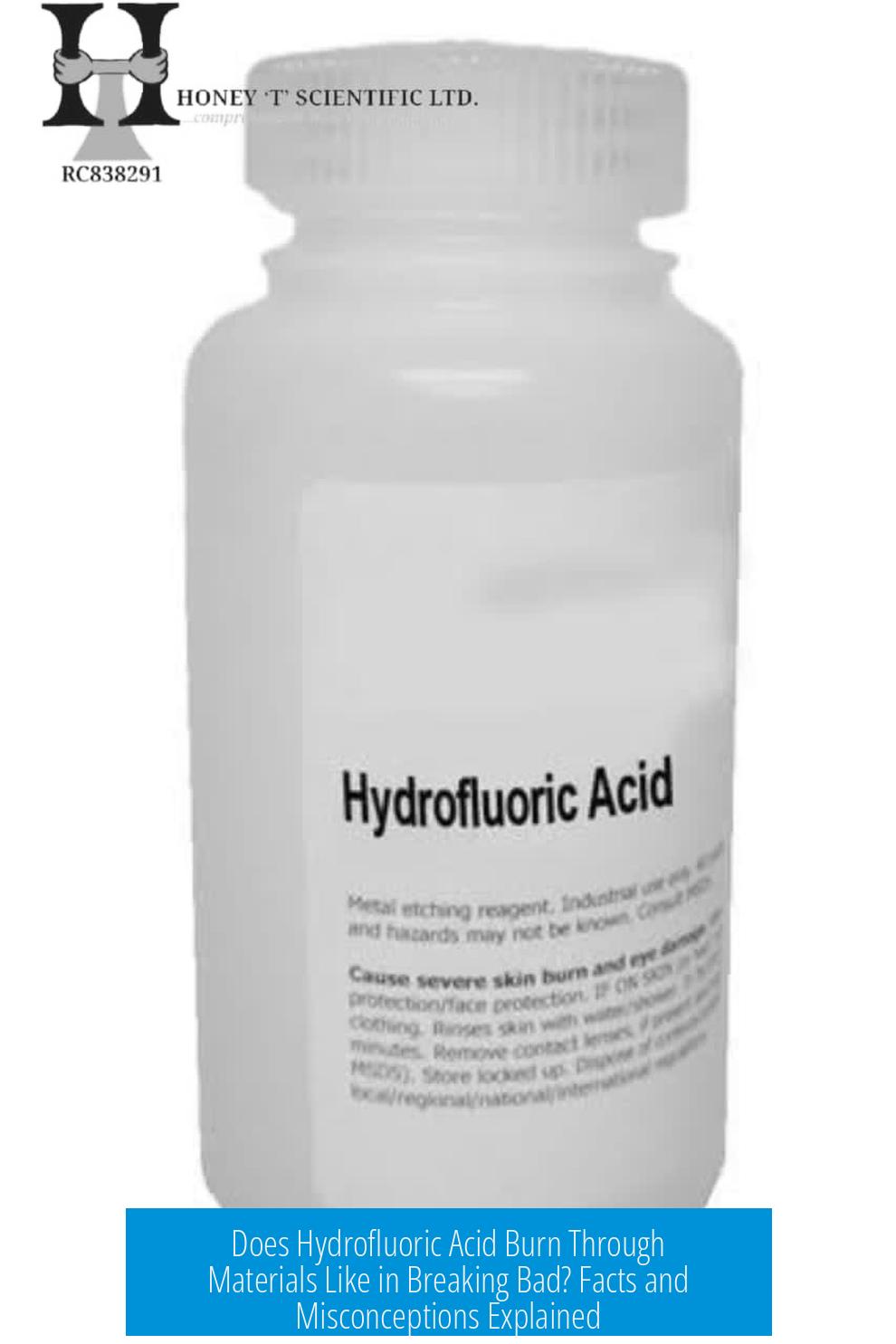
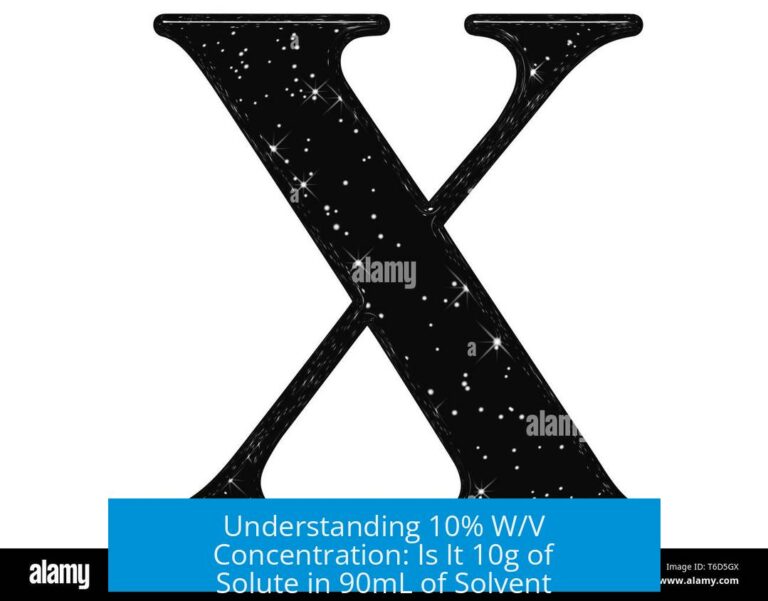

Leave a Comment